Reversing the flow of the Clyde story. Again.
- Published
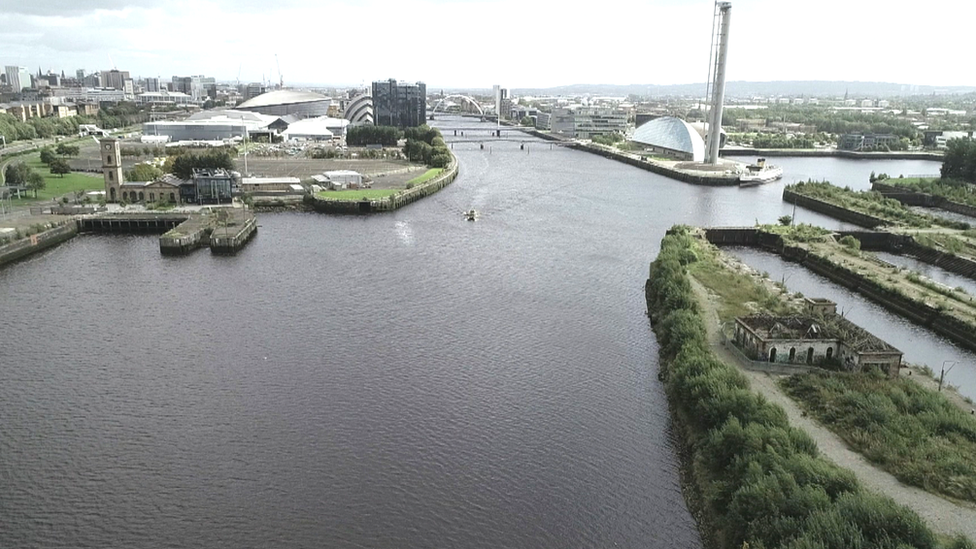
Mission Clyde is an ambitious new project to harness government appetite for big infrastructure spending, drawing together existing and possible elements of redeveloped land, green transport and renewable energy.
Several local councils and central government are working up plans intended to defy sceptics who feel they've seen a rebranding of old industrial sites and communities, but not much real change.
A new bridge is already on the way, a metro line could track the south bank, and the risk of flooding may require a tidal barrage downstream.
The banks are toxic, prone to flooding, and turning around its long-faded fortunes has had a few false dawns and more hype than reality. But could this be the point at which the Clyde is reborn?
The ambition is there, or at least it's taking shape, in that these are early days for the "Mission Clyde" project. From discussions I've had with those involved, the ambition has not been widely shared.
So let's do some sharing now. The idea is to tap the enthusiasm for big infrastructure, a transition to a green economy, and levelling-up neglected communities.
There's already a Glasgow city region deal, but this is on a much bigger scale, being compiled by the Scottish government, with several of the councils that border a stretch of the navigable river.
The idea is to change a corridor from the east of Glasgow to Greenock and Dumbarton. Initially, it targets nearly 1,000 acres of land that has to be detoxified from its industrial past - at least 15 times the land area of the Scottish Events Campus (SEC) in Glasgow.
There are large areas of riverside land that are liable to flooding, either from rain run-off or the growing risk from climate change of rising sea levels, with storm and tidal surges.
Tidal barrage
That flood risk has brought back an idea that hasn't surfaced for at least a decade - that the Clyde needs a tidal barrage.
With new tidal power technologies, it might be able to protect land upriver, and to harness marine energy.
There may also be dredging, long neglected, and repair of the river bank walls.
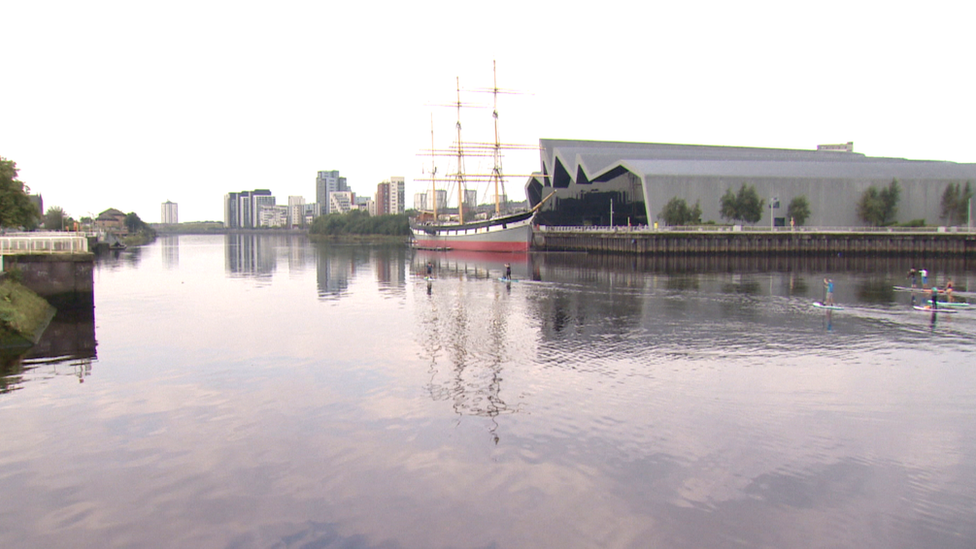
A bridge across the Clyde near the Riverside Museum is set to link Partick with Govan
A large dry dock area - near Pacific Quay and the Science Centre, recently used by Sam Mendes and Stephen Spielberg to film parts of the film 1917 - has a plan being set out today for an industrial heritage site.
The green tinge features plans to improve low-emission transport. So a metro is planned, to link the airport with the city centre.
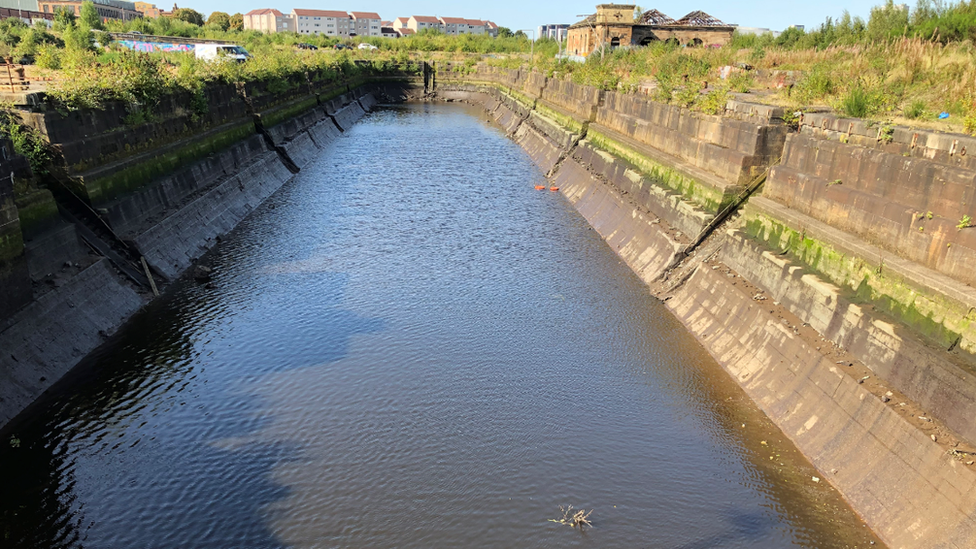
Govan dry dock is to be turned into a heritage site
Glasgow council leader Susan Aitken talks of the need to connect communities along the banks of the river and across it, while giving more people access to the river banks. But it's an obstacle to private sector investment if there's a threat of inundation.
"Flooding is a risk now that's very high on our agenda," she says. "There are key sites, the SEC being one of them, where we have ambitious development plans, to have the whole campus powered by the Clyde's renewable energy.
"[We need an] engineering solution to offset and mitigate that flooding risk - some kind of Clyde barrage is really what we need, that'll do more than offset flooding: it'll contribute to ways of making the Clyde more usable and developable."
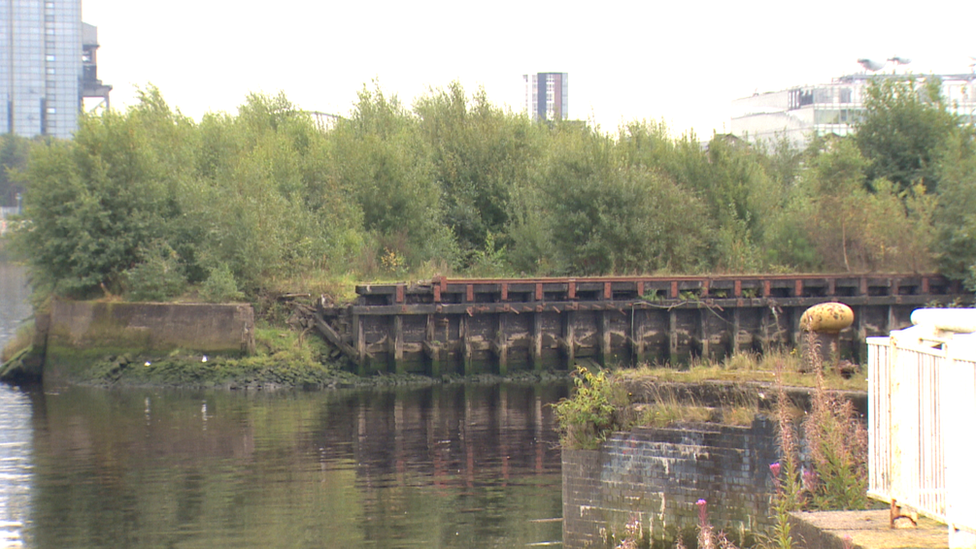
Large sections of the riverbank have become waste ground
Already approved is a major leisure and retail centre, close to the transport museum, with an "active travel" bridge being built between Partick and Govan. A plan is being published today for a new cycle way linking Glasgow's west end with the bridge.
A district heating system in Clydebank, extracting warmth from the river water, is also already in place.
Strathclyde and Glasgow universities are involved in plans to straddle the Clyde with innovation districts - Strathclyde involved in materials science, working with Boeing at a centre being created in Renfrew, and advanced manufacturing near Glasgow Airport.
Glasgow University is developing a bioscience quarter between the river's south bank in Govan and the Queen Elizabeth University Hospital. It has funding for a centre, potentially of international significance to develop personalised, targeted medicines.
Upstream in the city centre, Barclays is building one of three global financial processing hubs on the south bank, intended for 5,000 workers. If office workers ever return in numbers, that will focus Glasgow's financial district more on the river - rather than turning its back, as at present.
Doon the watter
Expect sceptics, however, who suspect this is more about branding than real development. The Clyde's industrial decline was clear 50 years ago.
There have been big pockets of development. But a trip "doon the watter" on the Waverley paddle steamer (when it's in operation, and because there's no option to take a river bus) will show long stretches of riverside that are neglected, the banks in sad disrepair.
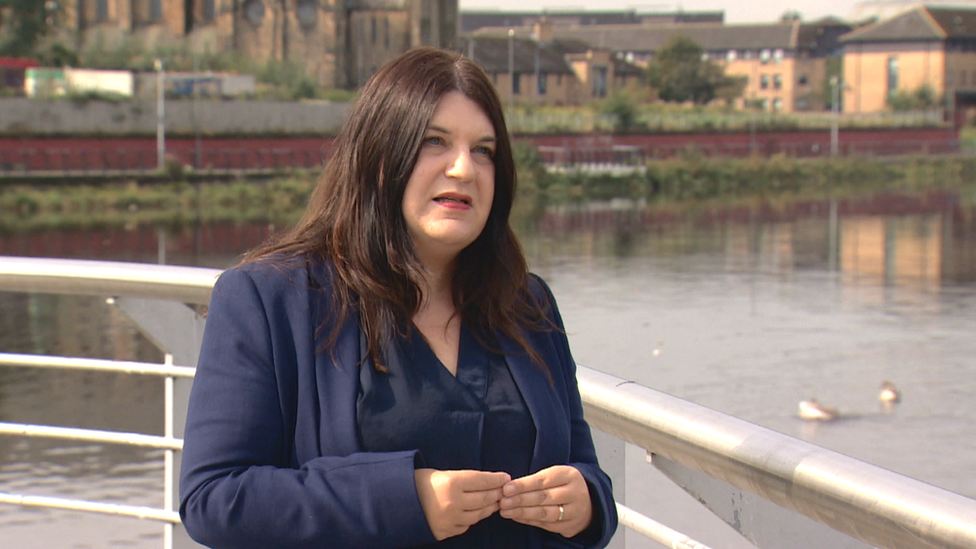
Glasgow council leader Susan Aitken believes regeneration could be an economic driver for the whole of Scotland
Susan Aitken concedes they have a point. "I can understand people being cynical," she told me, "because we have been through this in Glasgow in the past.
"This isn't about rebadging. We're not reinventing the wheel. We haven't come up with pie-in-the-sky ideas for the sake of it."
(She seems to have in mind the prime minister's idea of a bridge between Scotland and Northern Ireland.)
"This is practical, realisable stuff. But we want to do it faster than we would have done previously, not wait years and years. We're saying: everyone's talking about green recovery. This can give a green recovery.
"This can be a driver for a genuine economic recovery in the rest of Scotland. Investment here would have benefits the length and breadth of Scotland. And that's our message to the Scottish government, to Scottish Enterprise and to citizens here as well."
She argues that the Clyde is Europe's biggest riverside development opportunity. If true, it's partly because others have got there long before it.
Other cities have docklands transformed into vibrant and desirable commercial and residential districts.
Kim Wilkie, a specialist design consultant, has advised on how to make better use of the upper reaches of the Thames.
Within his advice, two strong themes. First, a project like this should be shaped by the people who live with and near the river.
Second, don't treat a river as a barrier but as a focus for living, work and leisure, integrated with the natural flow of such a dominant and powerful feature of geography.
